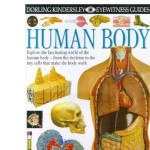Category: Science
Created by: tahira rafiq
Number of Blossarys: 5
 English (EN)
English (EN) Hungarian (HU)
Hungarian (HU) Norwegian Bokmål (NO)
Norwegian Bokmål (NO) Slovak (SK)
Slovak (SK) Indonesian (ID)
Indonesian (ID) German (DE)
German (DE) Chinese, Simplified (ZS)
Chinese, Simplified (ZS) Spanish (ES)
Spanish (ES) French (FR)
French (FR)
Hair begins in the dermis layer of the skin and pushes outward. It is made up primarily of protein keratin. Unlike other portions of the body, the hair is only alive at the root, where the sebaceous ...
Oral cavity (mouth) contains teeth, tongue, and major and minor salivary glands. It forms the food bolus and aids the swallowing of the food bolus. The tongue manipulates food to aid chewing and ...
Liver is the largest gland in the human body. It is divided, although incompletely, into four lobes. Right lobe is the largest. Liver is attached to the inferior surface of the diaphragm and to the ...
Large intestine (colon) has the major function of absorbing most of the water remaining in food residue that has not been absorbed by the small intestine while feces are formed. The large intestine ...
The matrix we call bone is made of inorganic mineral salts, primarily calcium and phosphorous, within a netwrk of callogenous fibers. Bone dominant-cell is an osteocyte, which developed from an ...
Blood is a form of tissue. The average-sized adult has about 10 pints of blood ( called units by blood banks). Almost half the volume of blood consists of cells, including red blood cells ...
Our brain consists of about 100 billion neurons, or nerve cells, that communicate with one another using chemical and electrical signals. Each neuron is the structural and functional unit of the ...








